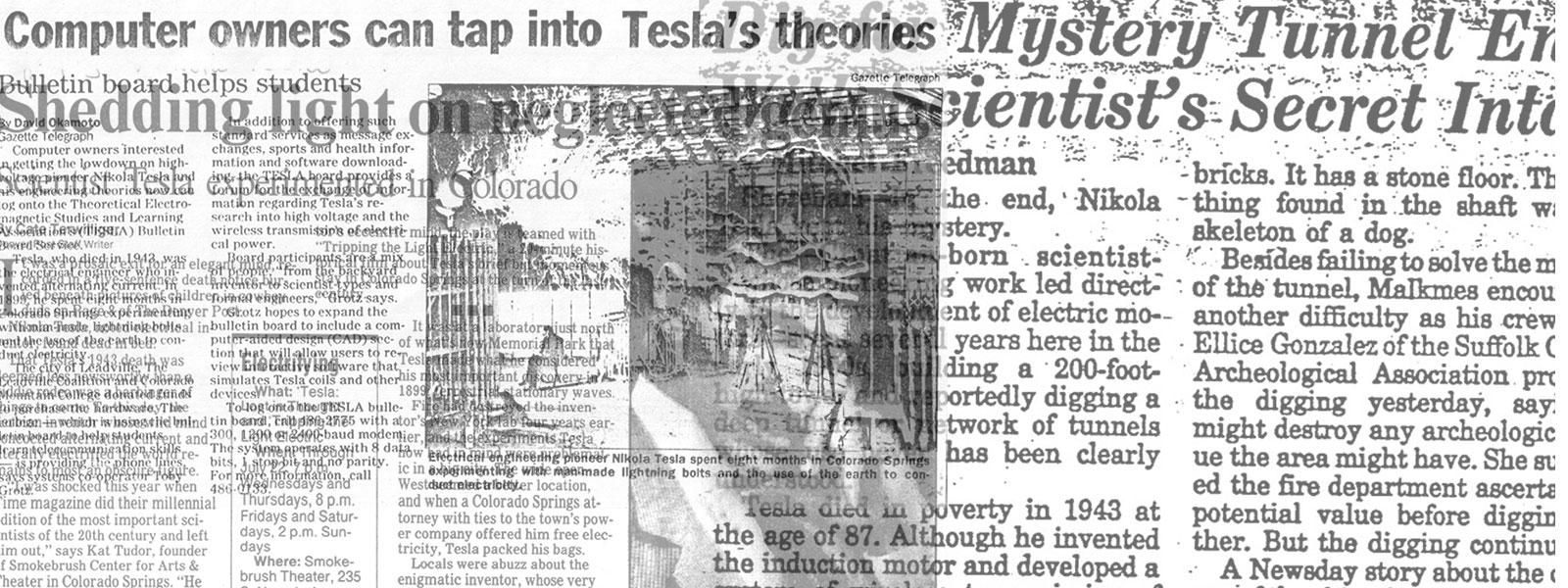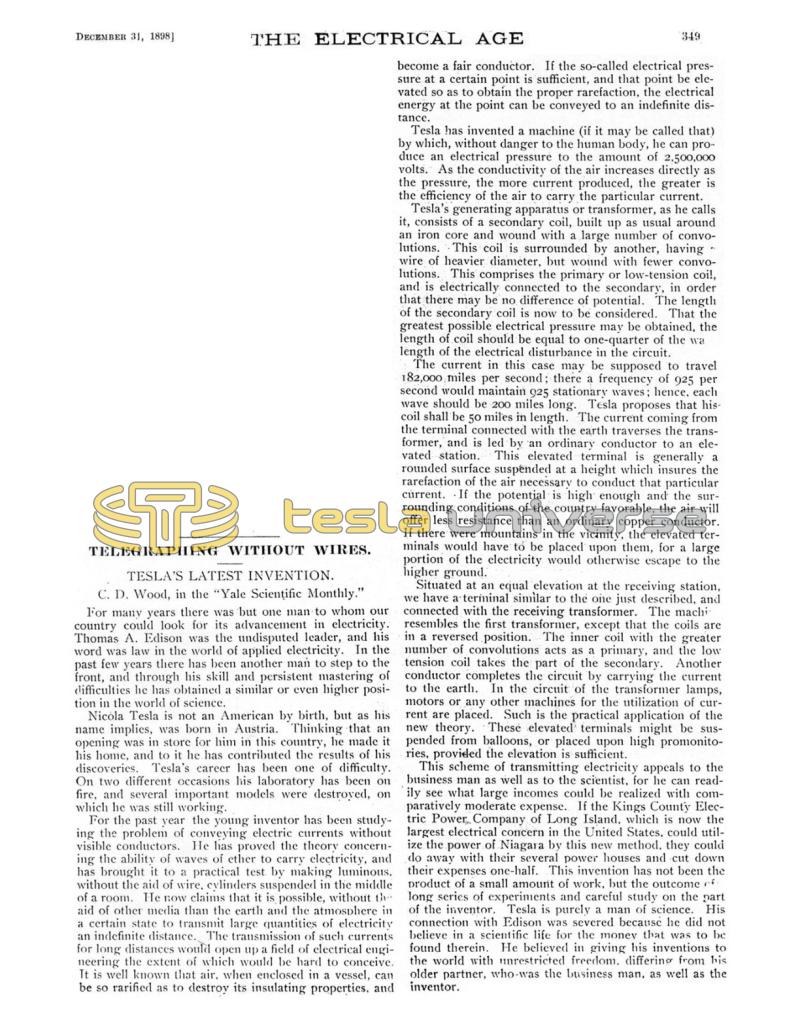
Nikola Tesla Articles
Telegraphing Without Wires
TESLA’S LATEST INVENTION
C. D. Wood, in the “Yale Scientific Monthly.”
For many years there was but one man to whom our country could look for its advancement in electricity. Thomas A. Edison was the undisputed leader, and his word was law in the world of applied electricity. In the past few years there has been another man to step to the front, and through his skill and persistent mastering of difficulties he has obtained a similar or even higher position in the world of science.
Nicola Tesla is not an American by birth, but as his name implies, was born in Austria. Thinking that an opening was in store for him in this country, he made it his home, and to it he has contributed the results of his discoveries. Tesla’s career has been one of difficulty. On two different occasions his laboratory has been on fire, and several important models were destroyed, on which he was still working.
For the past year the young inventor has been studying the problem of conveying electric currents without visible conductors. He has proved the theory concerning the ability of waves of ether to carry electricity, and has brought it to a practical test by making luminous, without the aid of wire, cylinders suspended in the middle of a room. He now claims that it is possible, without the aid of other media than the earth and the atmosphere in a certain state to transmit large quantities of electricity an indefinite distance. The transmission of such currents for long distances would open up a field of electrical engineering the extent of which would be hard to conceive. It is well known that air, when enclosed in a vessel, can be so rarified as to destroy its insulating properties, and become a fair conductor. If the so-called electrical pressure at a certain point is sufficient, and that point be elevated so as to obtain the proper rarefaction, the electrical energy at the point can be conveyed to an indefinite distance.
Tesla has invented a machine (if it may be called that) by which, without danger to the human body, he can produce an electrical pressure to the amount of 2,500,000 volts. As the conductivity of the air increases directly as the pressure, the more current produced, the greater is the efficiency of the air to carry the particular current.
Tesla’s generating apparatus or transformer, as he calls it, consists of a secondary coil, built up as usual around an iron core and wound with a large number of convolutions. This coil is surrounded by another, having wire of heavier diameter, but wound with fewer convolutions. This comprises the primary or low-tension coil, and is electrically connected to the secondary, in order that there may be no difference of potential. The length of the secondary coil is now to be considered. That the greatest possible electrical pressure may be obtained, the length of coil should be equal to one-quarter of the wave length of the electrical disturbance in the circuit.
The current in this case may be supposed to travel 182,000 miles per second; there a frequency of 925 per second would maintain 925 stationary waves; hence, each wave should be 200 miles long. Tesla proposes that his coil shall be 50 miles in length. The current coming from the terminal connected with the earth traverses the transformer, and is led by an ordinary conductor to an elevated station. This elevated terminal is generally a rounded surface suspended at a height which insures the rarefaction of the air necessary to conduct that particular current. If the potential is high enough and the surrounding conditions of the country favorable, the air will offer less resistance than an ordinary copper conductor. If there were mountains in the vicinity, the elevated terminals would have to be placed upon them, for a large portion of the electricity would otherwise escape to the higher ground.
Situated at an equal elevation at the receiving station, we have a terminal similar to the one just described, and connected with the receiving transformer. The machine resembles the first transformer, except that the coils are in a reversed position. The inner coil with the greater number of convolutions acts as a primary, and the low tension coil takes the part of the secondary. Another conductor completes the circuit by carrying the current to the earth. In the circuit of the transformer lamps, motors or any other machines for the utilization of current are placed. Such is the practical application of the new theory. These elevated terminals might be suspended from balloons, or placed upon high promontories, provided the elevation is sufficient.
This scheme of transmitting electricity appeals to the business man as well as to the scientist, for he can readily see what large incomes could be realized with comparatively moderate expense. If the Kings County Electric Power Company of Long Island, which is now the largest electrical concern in the United States, could utilize the power of Niagara by this new method, they could do away with their several power houses and cut down their expenses one-half. This invention has not been the product of a small amount of work, but the outcome of long series of experiments and careful study on the part of the inventor. Tesla is purely a man of science. His connection with Edison was severed because he did not believe in a scientific life for the money that was to be found therein. He believed in giving his inventions to the world with unrestricted freedom, differing from his older partner, who was the business man, as well as the inventor.
